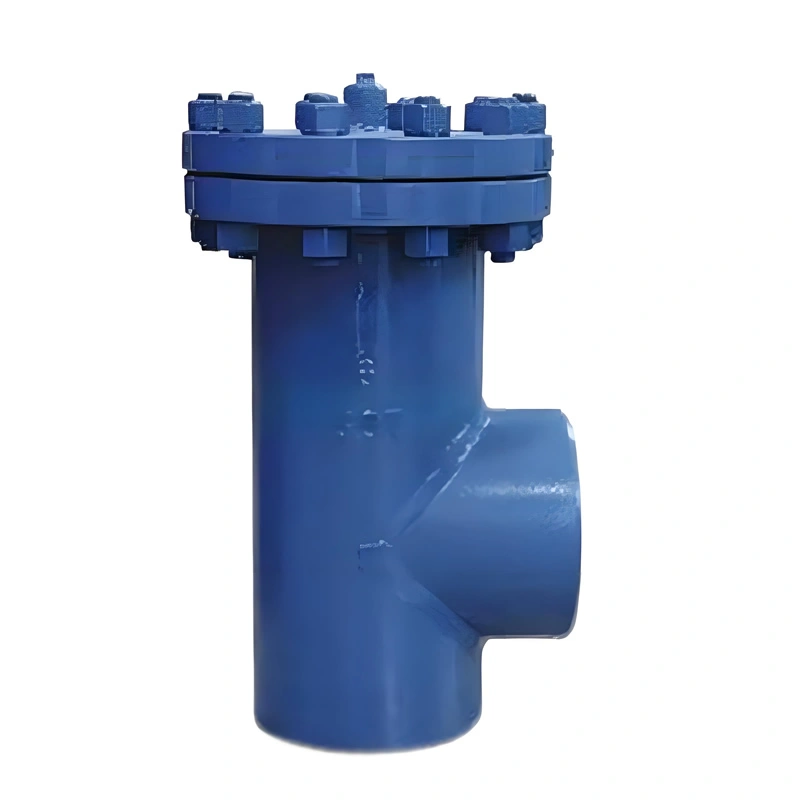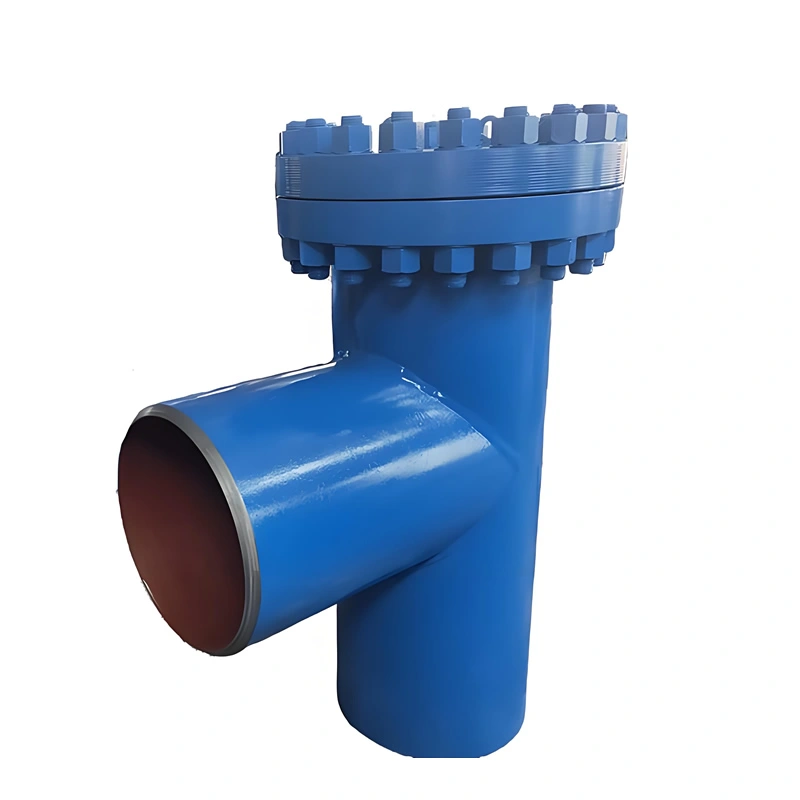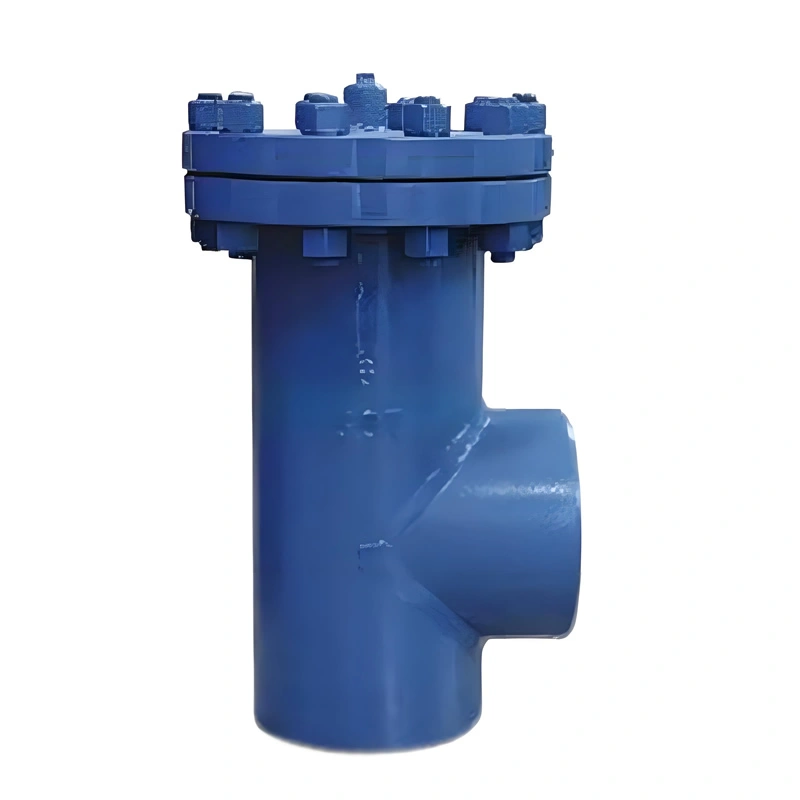- A234 Wpb, Wpbs
- DN15-DN1000
- Class 150lb-900lb
- CE, SGS, GMP
- MFG,ANSI B 16.34
- ANSI B 16.34
- API 598
- WCB,WC1,WC6,WC9,LCB,LCC,LC3,C5,C12,CF8(M),CF8C,CF3(M),etc.
Specification
NEWWAY Steel Fabricated Butt-Welded T-Type Strainer
I. Product Overview
NEWWAY Steel Fabricated Butt-Welded T-Type Strainer is a high-efficiency impurity filtration device designed for industrial fluid pipelines. Using a fabricated structure (assembled from preformed components) and a T-type flow channel, it efficiently traps solid particles in fluids to protect downstream equipment—such as pumps, valves, heat exchangers, and precision instruments—from wear or blockage. Available in materials like Wpb (carbon steel), SS304, and SS316 (stainless steel), it adapts to diverse media (water, oil, steam, and mild corrosives) and is widely used in petroleum, chemical, power, and municipal systems as a critical component for maintaining pipeline cleanliness.
II. Key Attribute Parameters
Size Range: Nominal diameter (DN) spans DN15 to DN1000, covering small-caliber precision lines (e.g., instrument pipelines) and large industrial main pipelines (e.g., power plant steam mains).
Pressure Class: 150lb to 900lb, with maximum operating pressure varying by grade—15kgf/cm² for low-pressure models and 30kgf/cm² for high-pressure models—meeting medium to high-pressure system requirements.
Connection Type: Butt-welded ends, ensuring seamless integration with pipelines. This design reduces fluid resistance, minimizes leakage risks, and enhances overall pipeline integrity compared to flange connections.
Material Specifications:
Body & Components: Fabricated from Wpb (carbon steel), SS304, or SS316. Wpb is cost-effective for neutral fluids (water, oil); SS304/SS316 offers superior corrosion resistance for acidic/alkaline or high-purity media.
Filter Screen: 304 stainless steel woven or perforated mesh, featuring high tensile strength (≥520MPa) and corrosion resistance, ensuring durability under fluid impact.
Sealing Elements: Asbestos-based gaskets or Buna-N O-rings, providing reliable sealing under high temperature and pressure.
Operating Conditions:
Media: Water, oil, steam, and mild corrosive fluids.
Temperature: -20℃ to 350℃, compatible with both low-temperature and high-temperature (e.g., steam) environments.
Testing Standards: Complies with API 598 and ANSI B16.34. Hydrostatic testing is performed at 1.5 times the nominal pressure (e.g., 22.5kgf/cm² for 150lb models) to verify pressure resistance and leak tightness.




